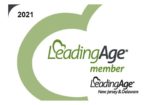Blogs , Business/Corporate Law Blog , COVID-19
PPP Flexibility Act: 60/40 Rule or 60% Cliff?
June 8, 2020 | by Matthew RheingoldThe PPP Flexibility Act (the “Act”) would change the 75/25 rule. The Act states:
“To receive loan forgiveness under this section, an eligible recipient shall use at least 60 percent of the covered loan amount for payroll costs, and may use up to 40 percent of such amount for any payment of interest on any covered mortgage obligation (which shall not include any prepayment of or payment of principal on a covered mortgage obligation), any payment on any covered rent obligation, or any covered utility payment.”
This new provision has been dubbed the new “60/40” rule. However, before we dive into its implications, some context is needed.
Forgiveness Limitations under the CARES Act
Where did the old 75/25 rule even come from? It was not anywhere to be found in the CARES Act. There were two main limits on forgiveness of a PPP loan under the original CARES Act; the forgiveness amount would be reduced by (1) the ratio of a reduction in the number of pre-COVID employees and (2) the reduction of an employee’s wages in excess of 25%. So, not only would the employer be unable to actually spend some of the PPP money because there is less staff or wages to pay, but forgiveness on the amounts actually paid by the employer would also be reduced.
The 75% Rule
Six days after the CARES Act was signed into law, the 75% rule reared its ugly head and commentators were not happy. On April 2, 2020, the SBA issued an interim final rule stating that the recipient of a PPP loan must spend at least 75% of the total loan proceeds on payroll costs in order to qualify for loan forgiveness. Under the 75% rule, if an employer received a $100,000 PPP loan and spent $70,000 on payroll costs $30,000 on non-payroll costs, then no portion of the loan would be forgiven.
The 75/20 Rule
In comes the 75/25 rule. On April 14, 2020, the SBA issued another interim final rule, which did not exactly repeal the 75% rule, but rather clarified it. The 75/25 rule states that no more than 25% of the total amount of loan forgiveness may be attributed to non-payroll costs. For example, if an employer received a $100,000 PPP loan and spent $70,000 on payroll costs and $30,000 on non-payroll costs, the amount of forgiveness would be limited to $93,333.33 (i.e., $93,333.33 x 75% = $70,000). The 75/25 rule made a little more sense than the 75% rule, but how it jives with the employee/wage reduction limitations on forgiveness under the CARES Act is still not clear.
The New 60/40 Rule
While the PPP Flexibility Act brings much needed relief to PPP loan recipients, the new 60/40 rule is completely different from the old 75/25 rule. The Act states “[t]o receive loan forgiveness under this section, an eligible recipient shall use at least 60 percent of the covered loan amount for payroll costs. . . .” In effect, Congress has legislated the SBA’s 75% rule first announced on April 2, 2020 into law, but reduced to 60%. While the Act does not state that no more than 40% of total amount of loan forgiveness may be attributed to non-payroll costs like the old 75/25 rule, can we safely assume that will be the case? We again wait for guidance . . .








